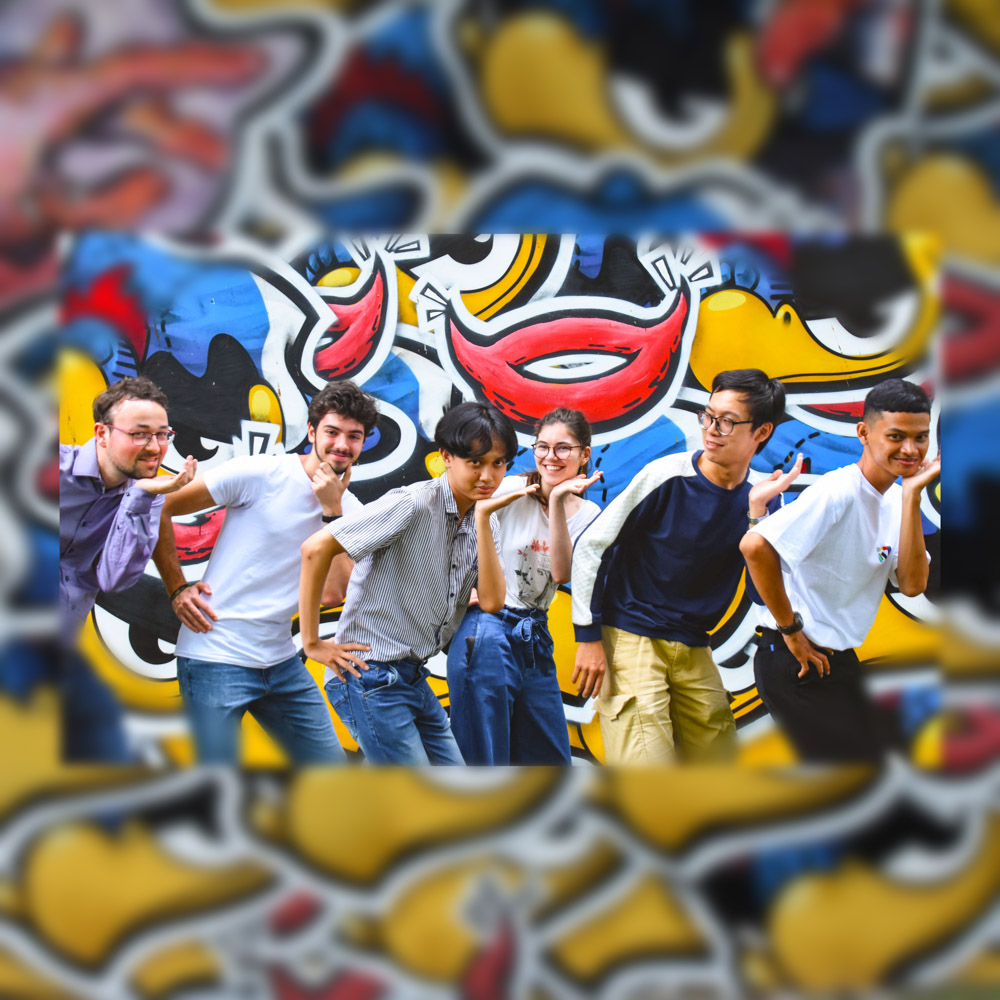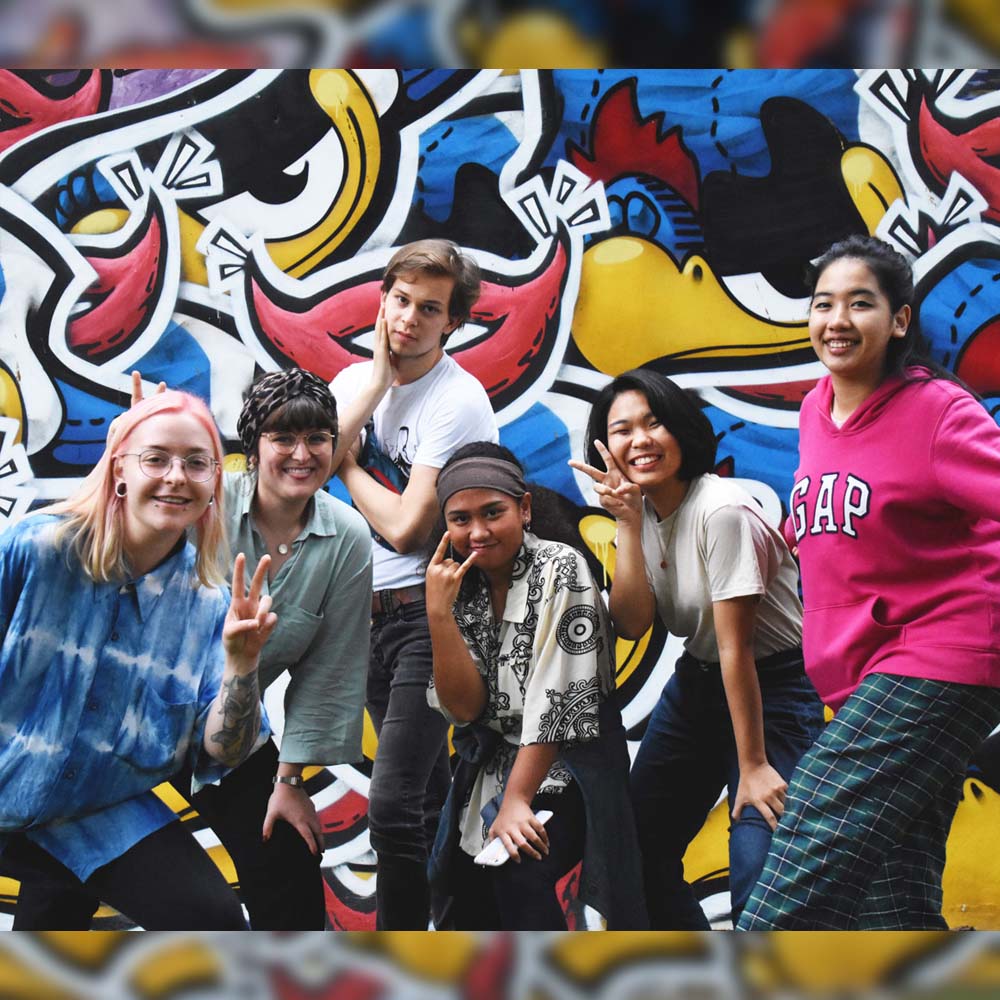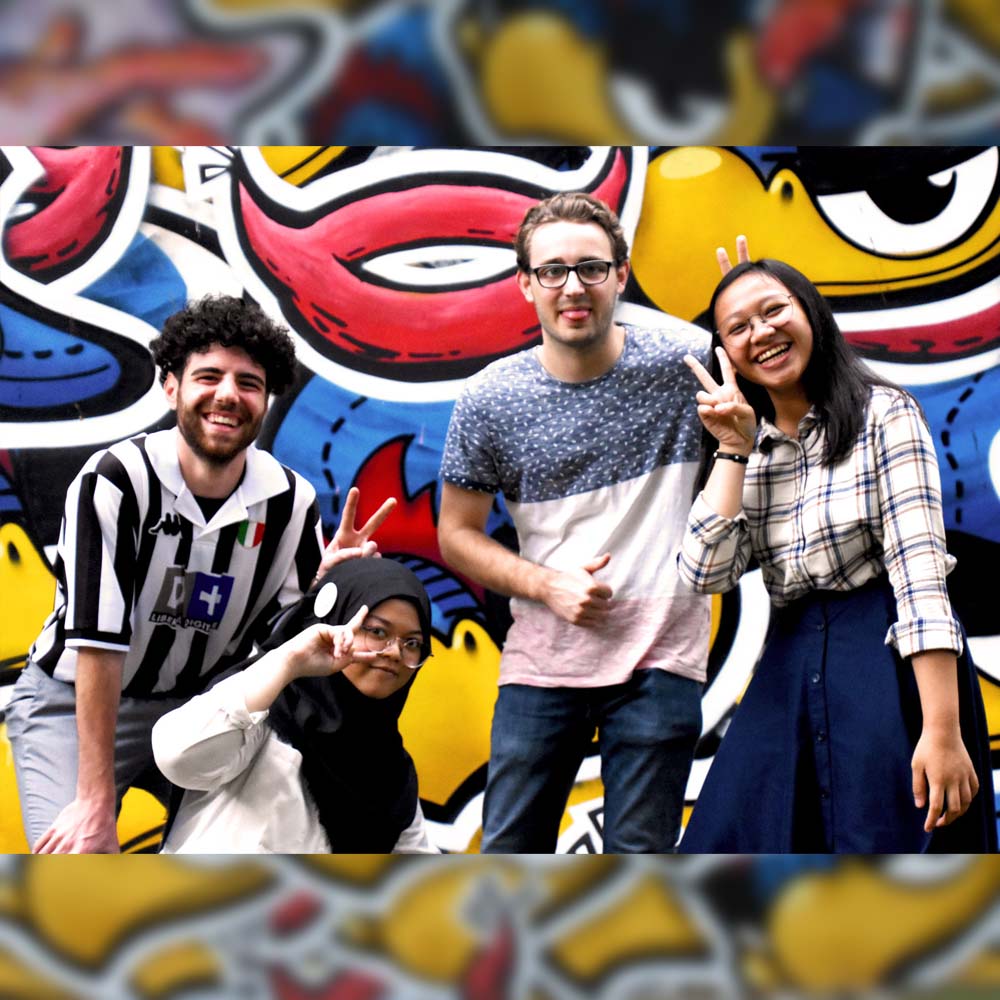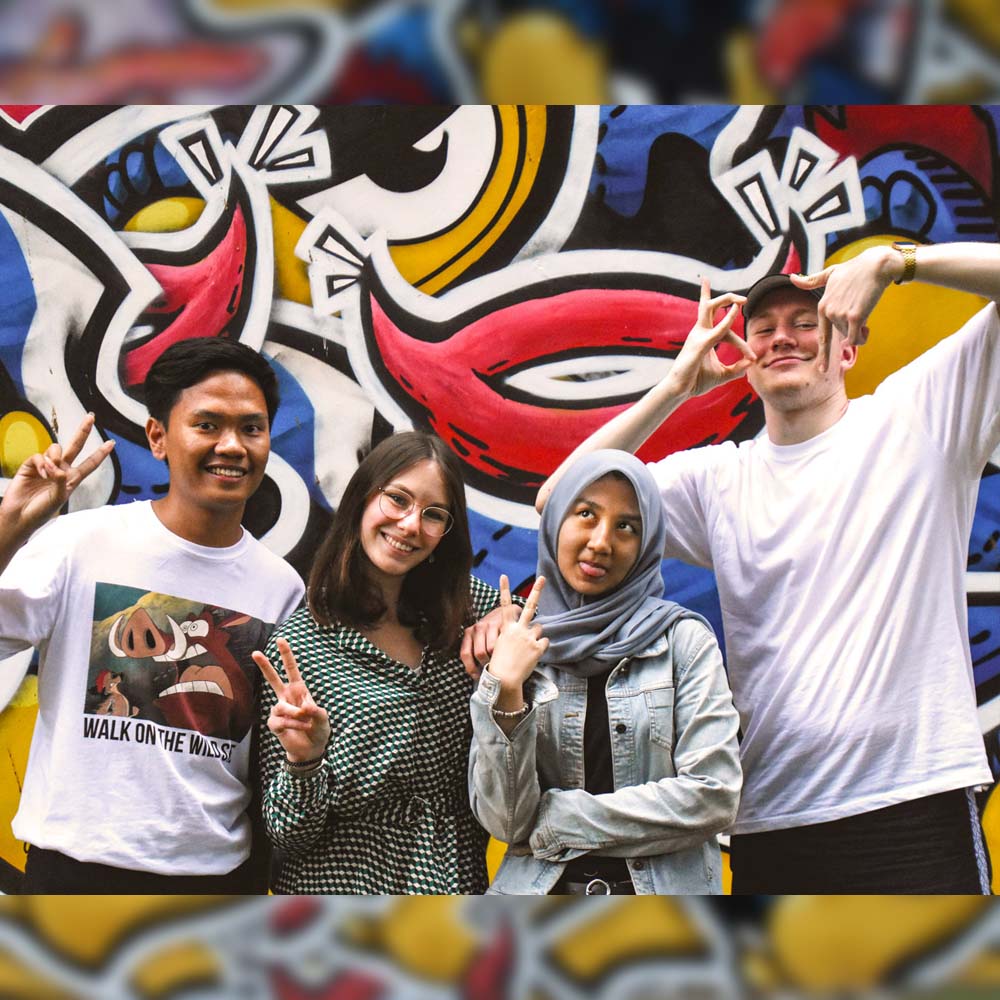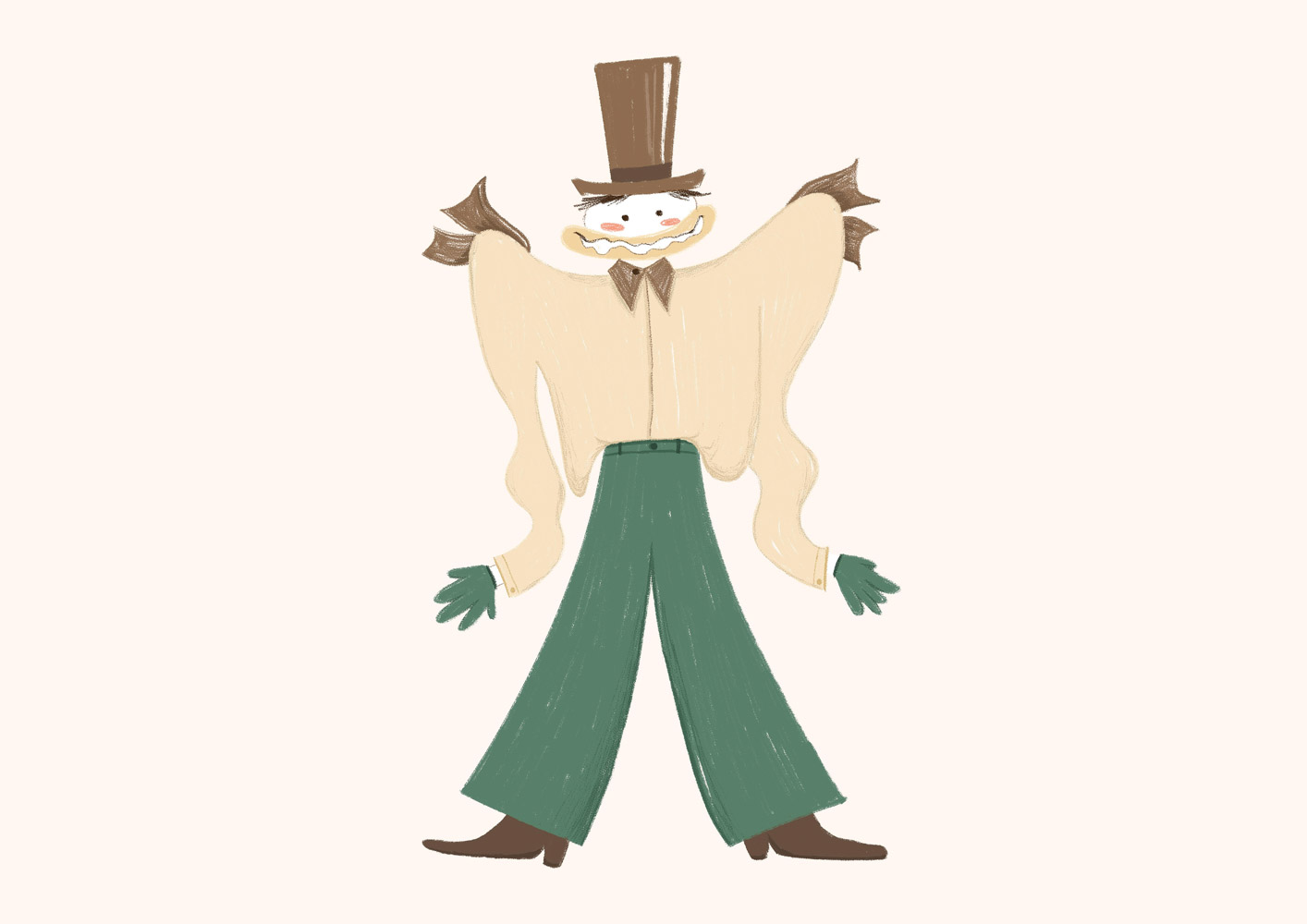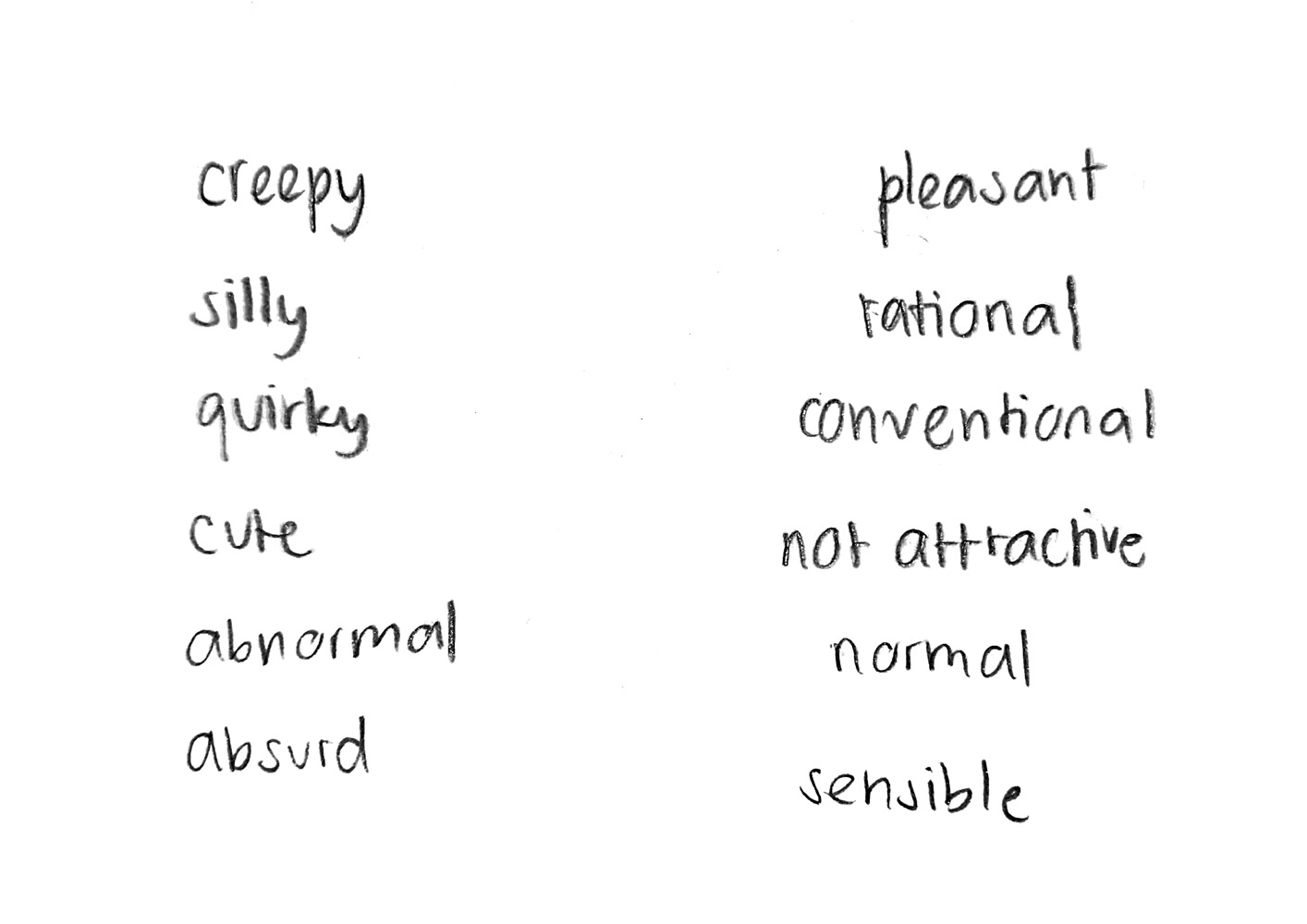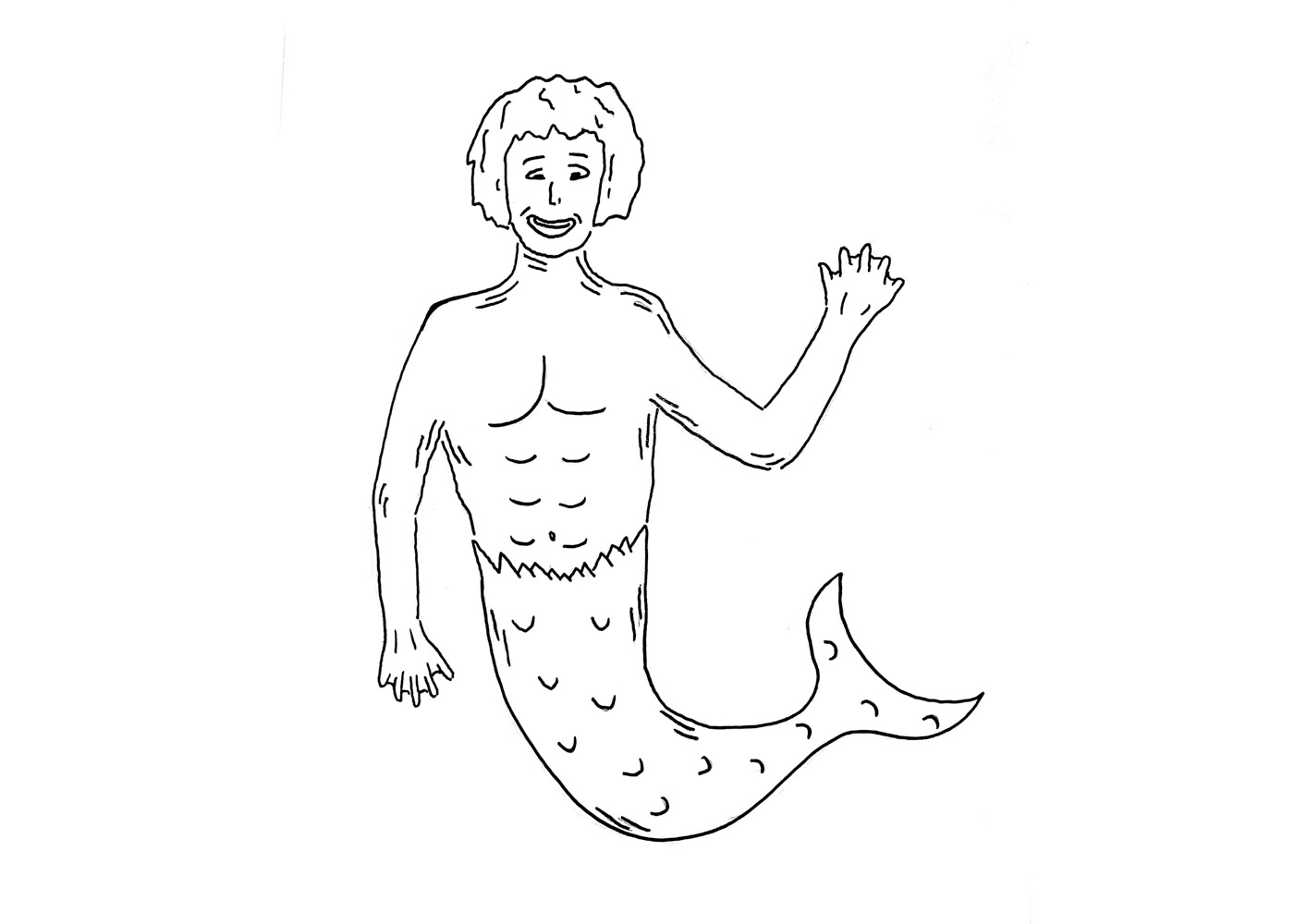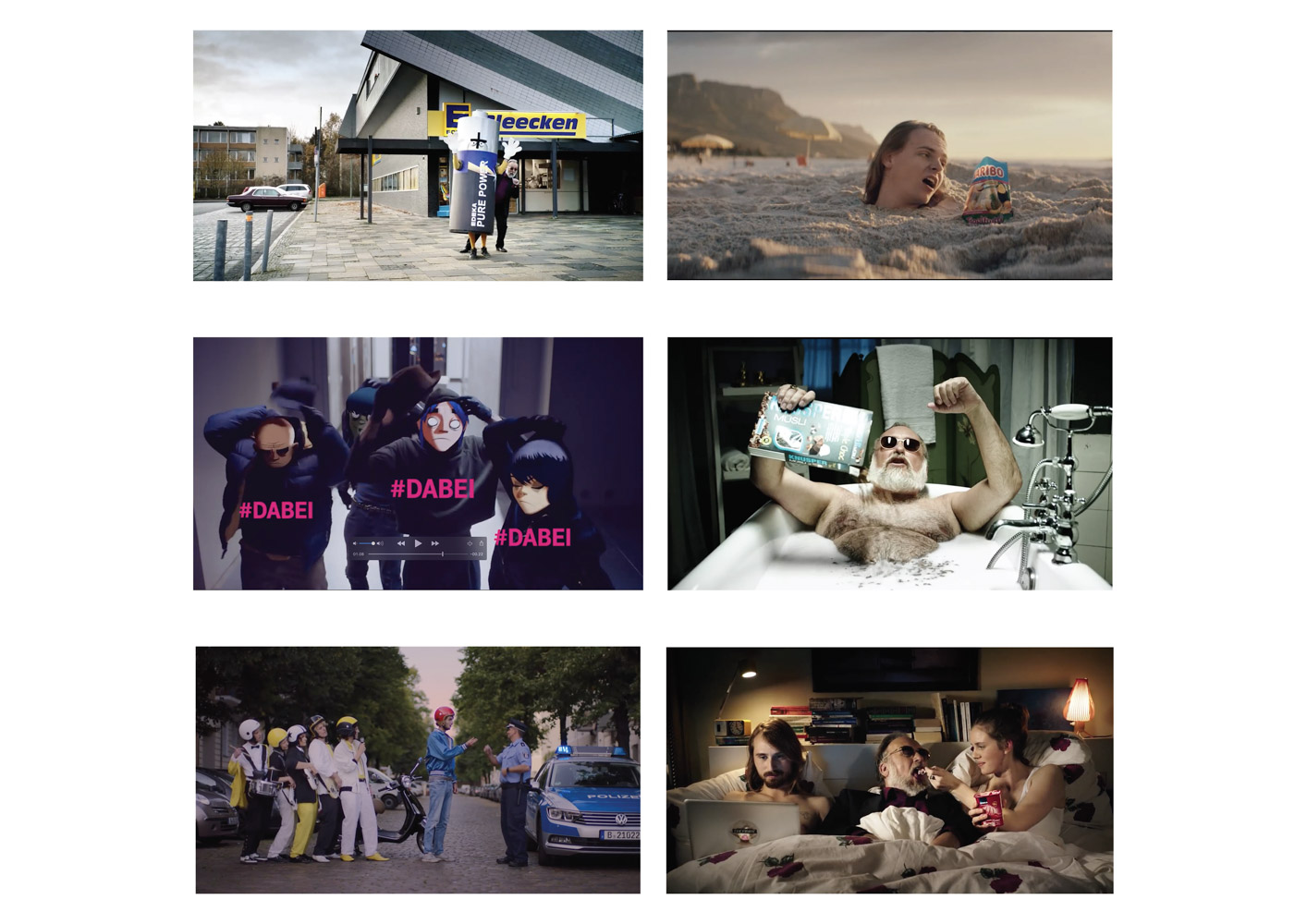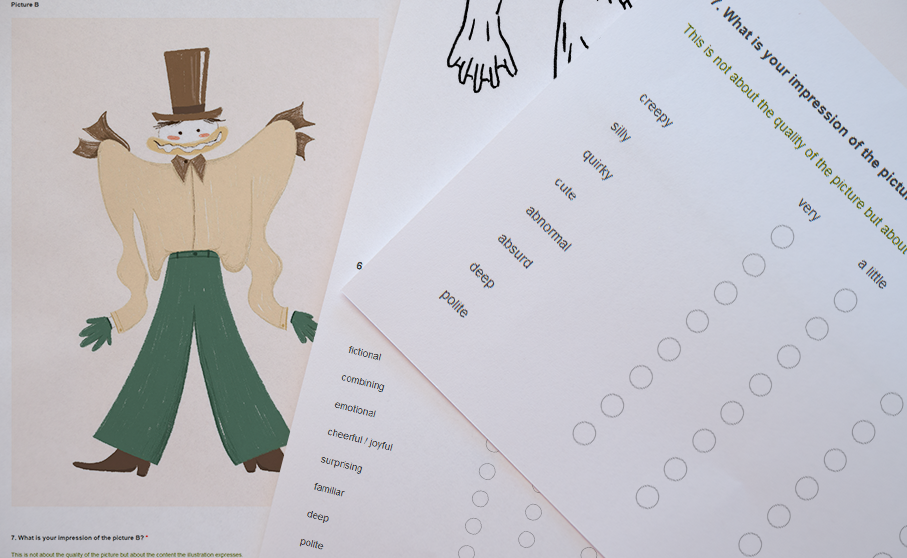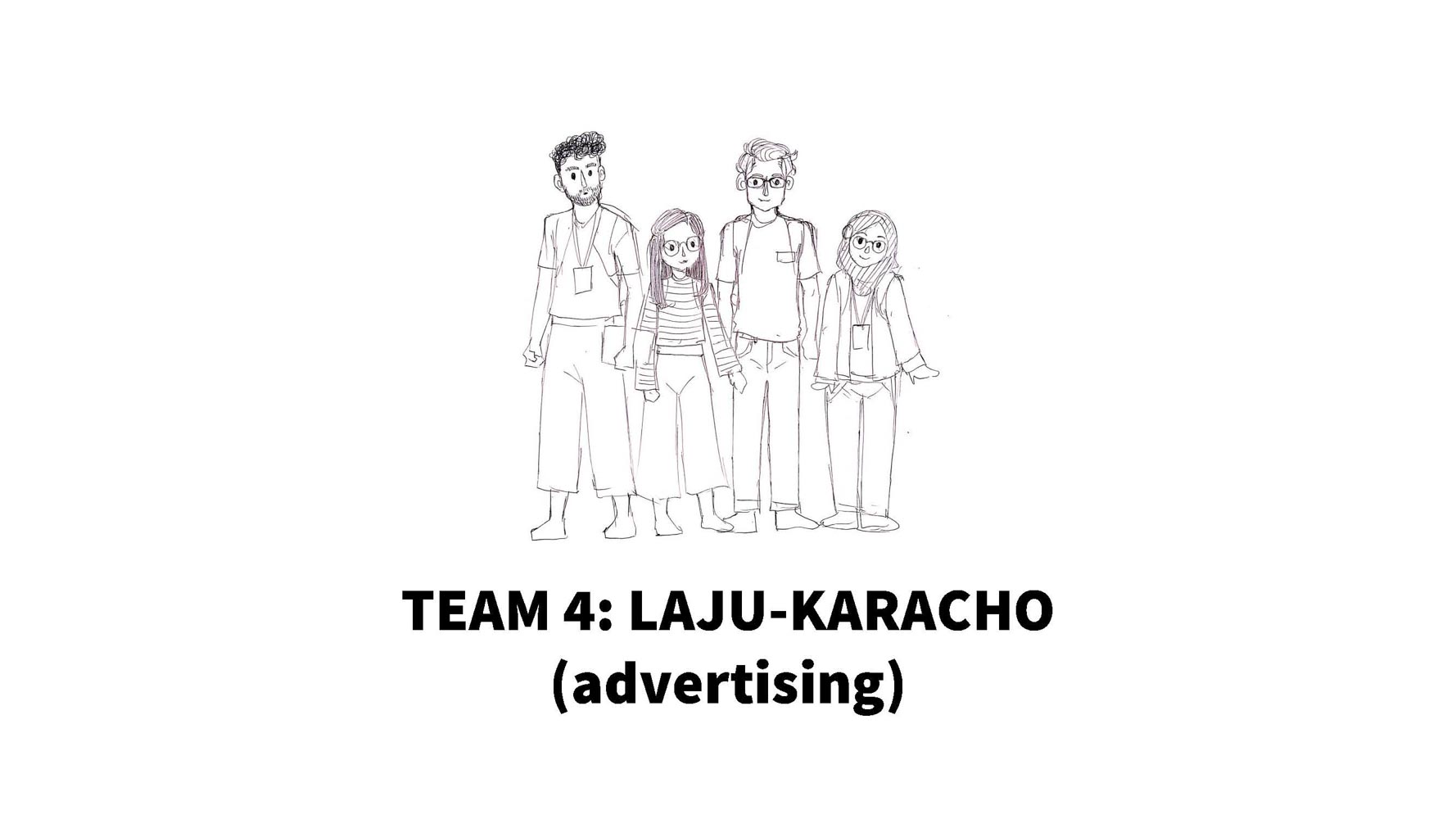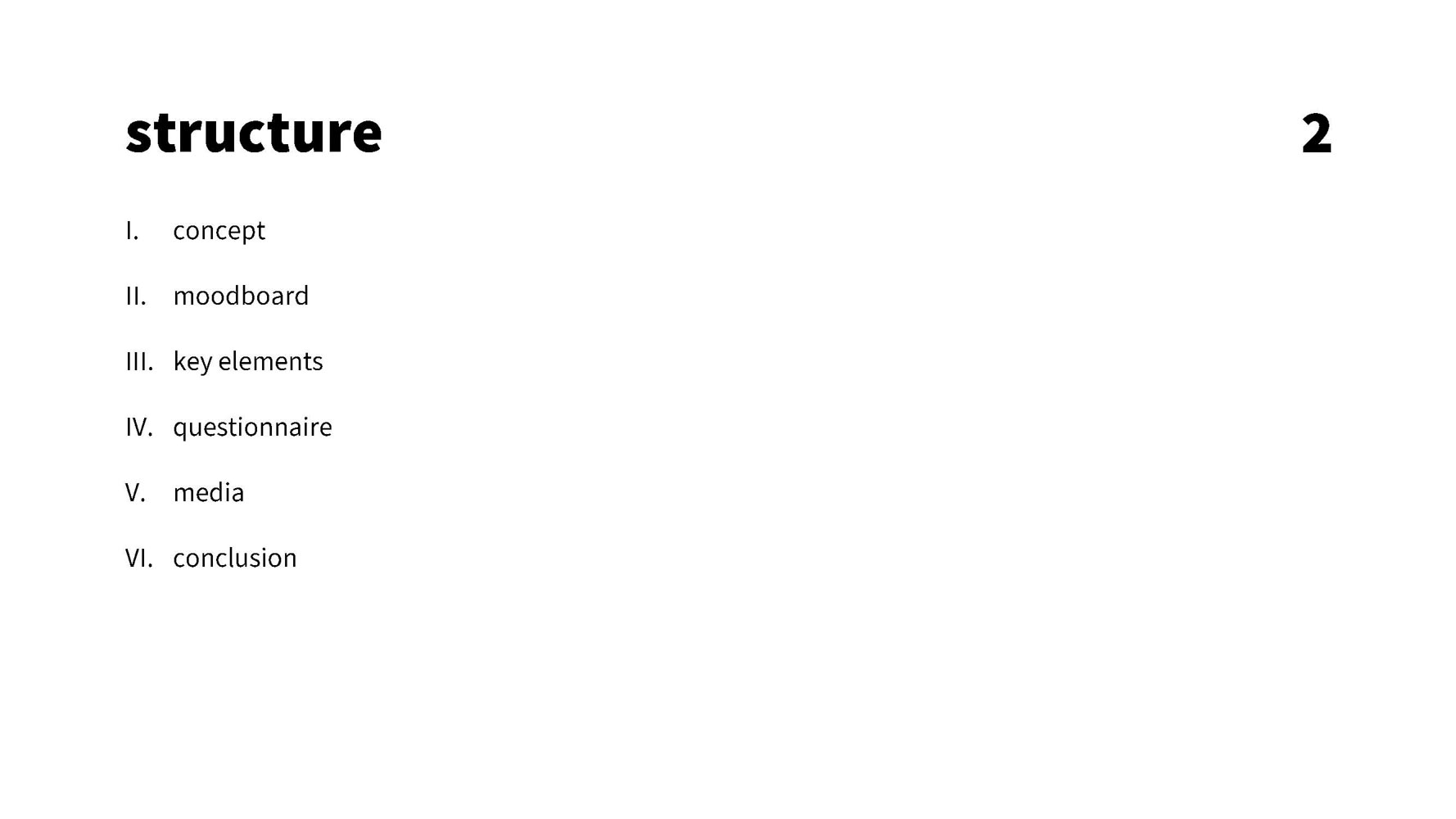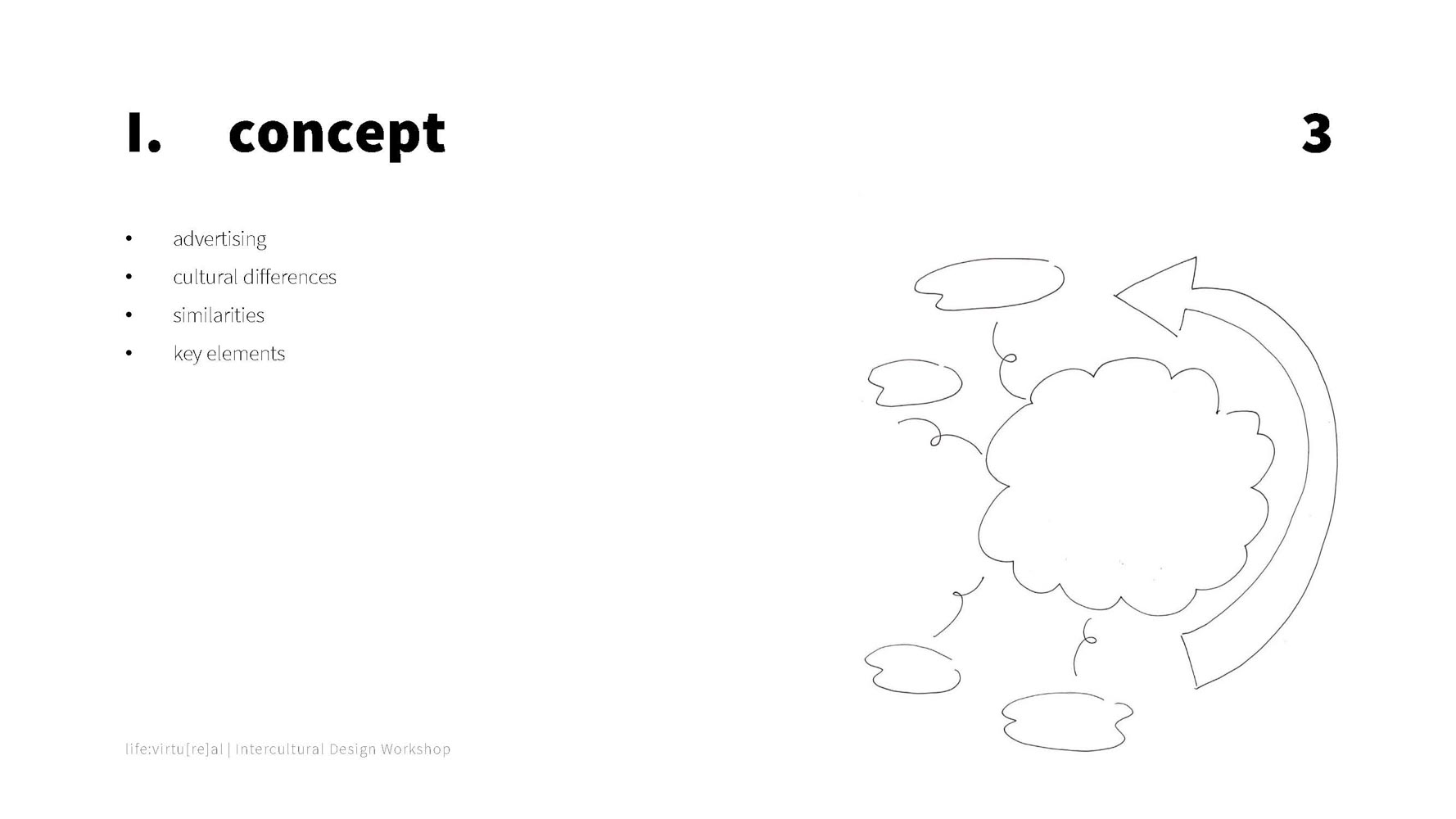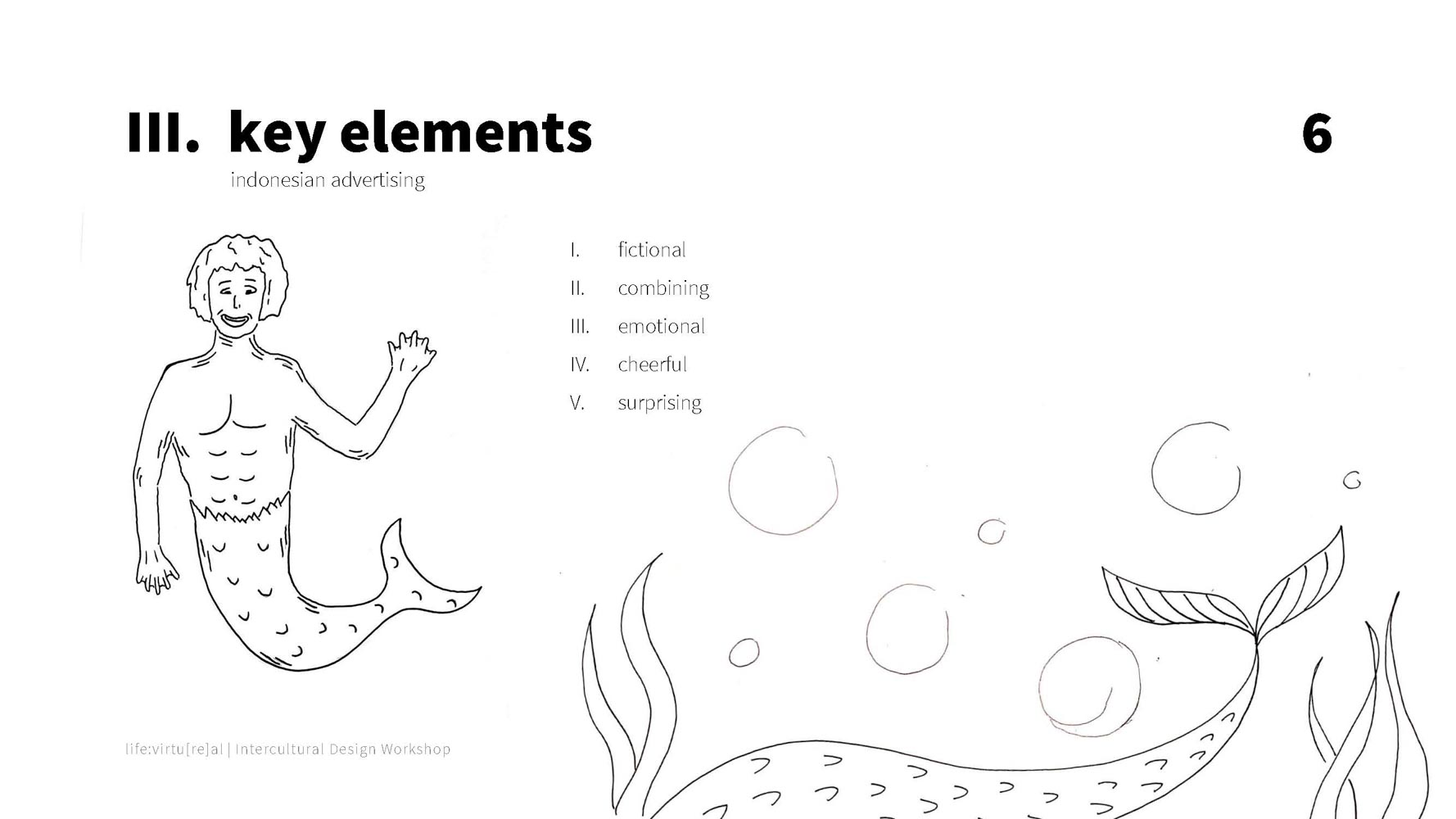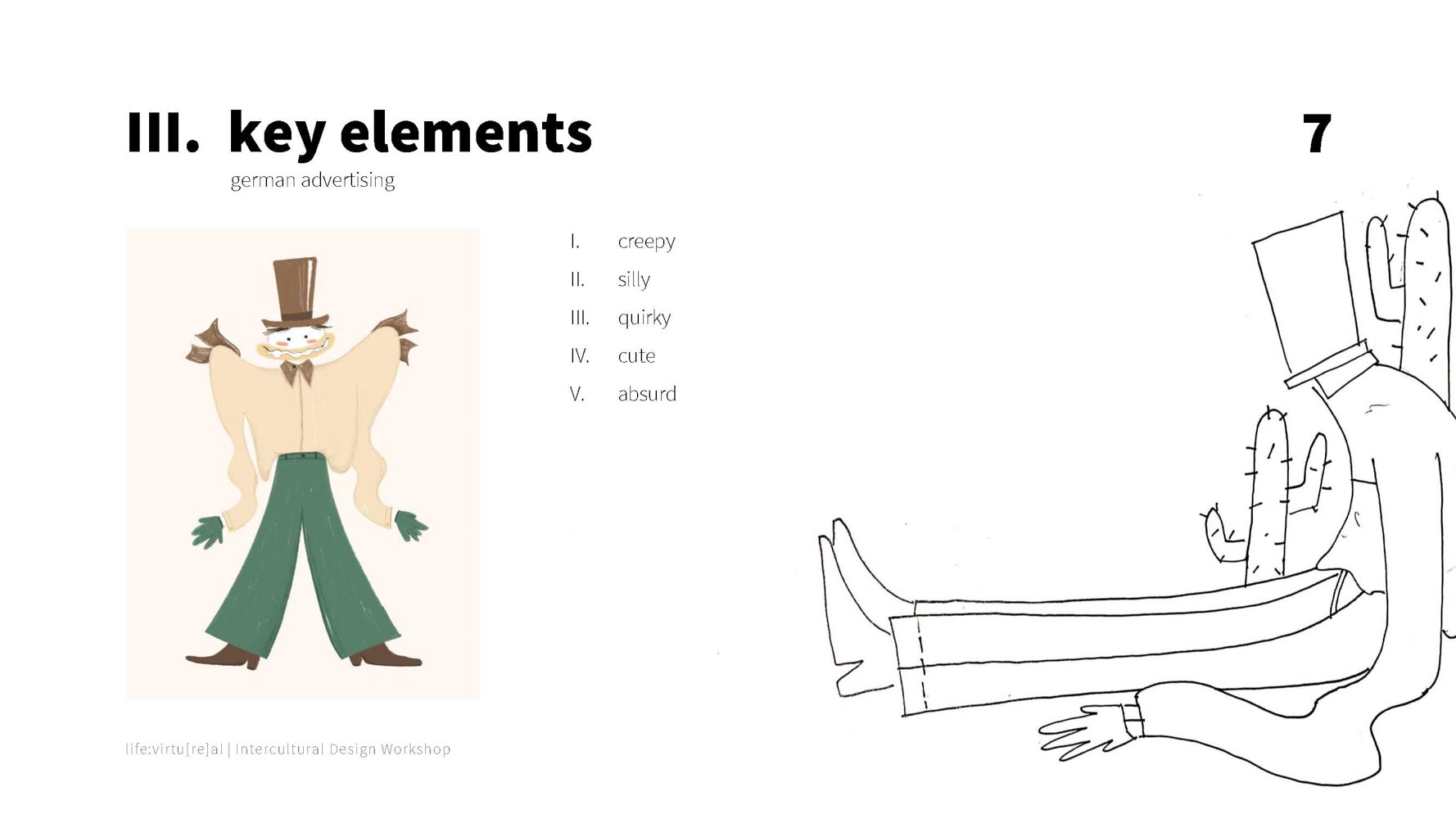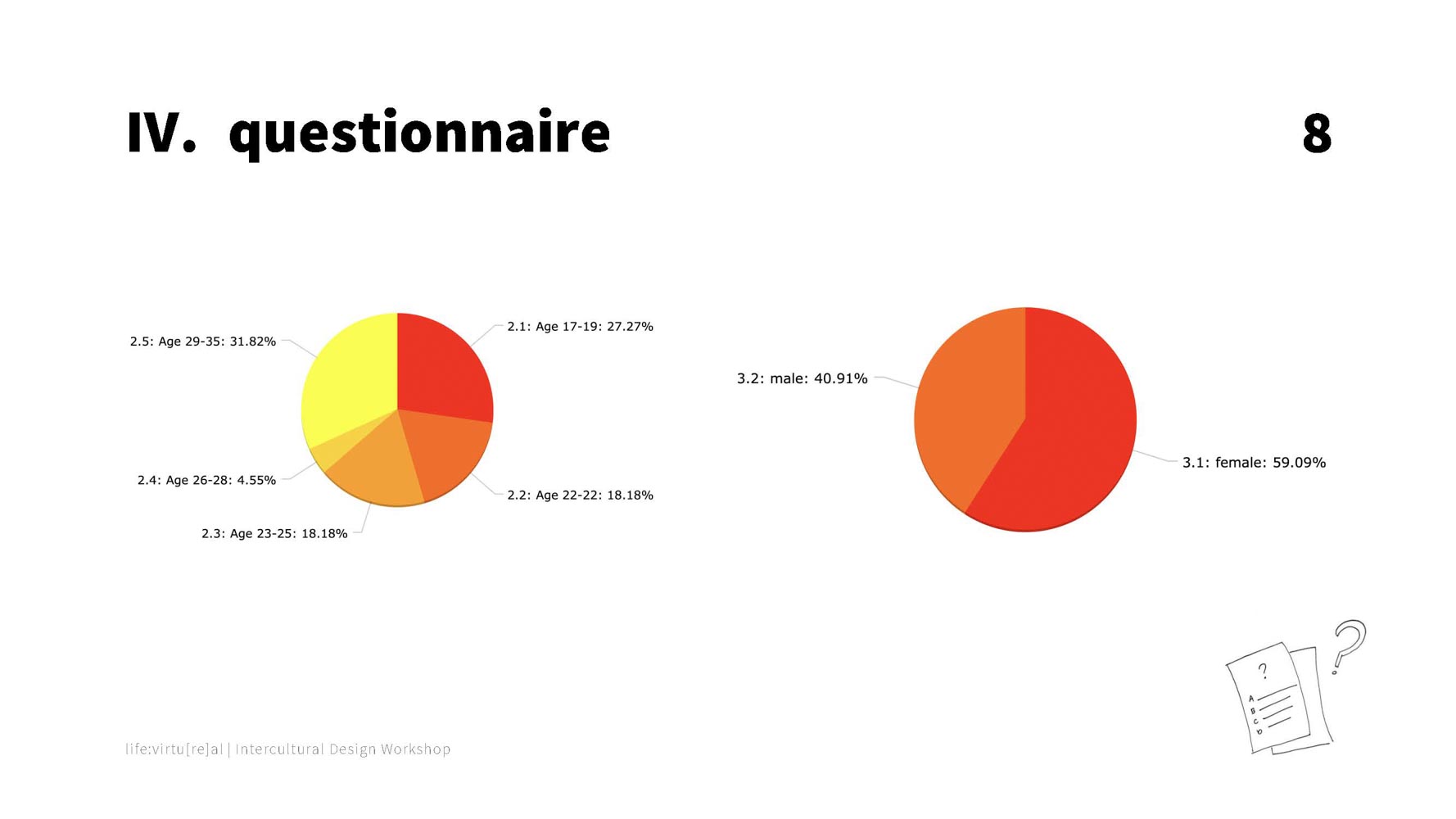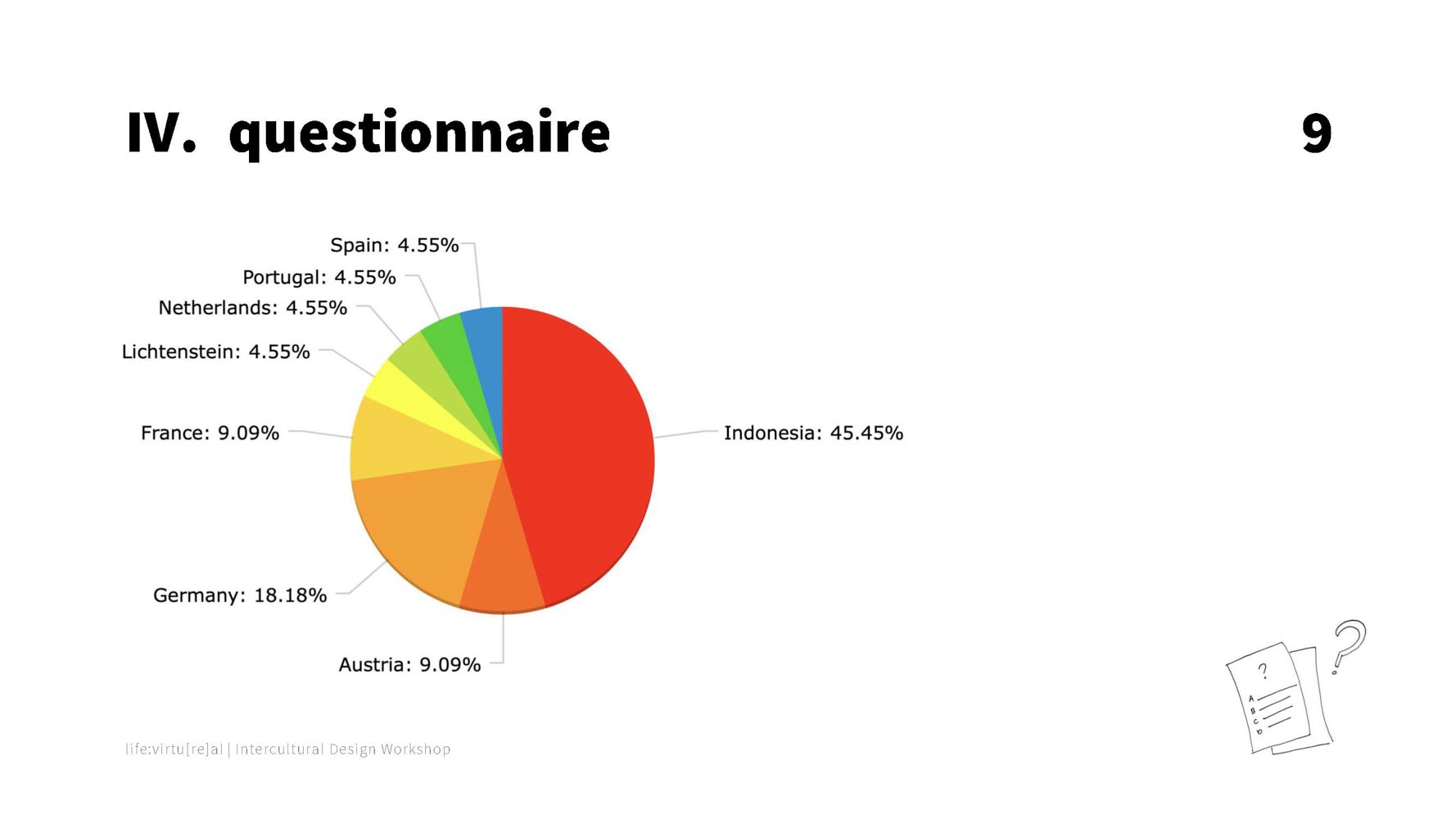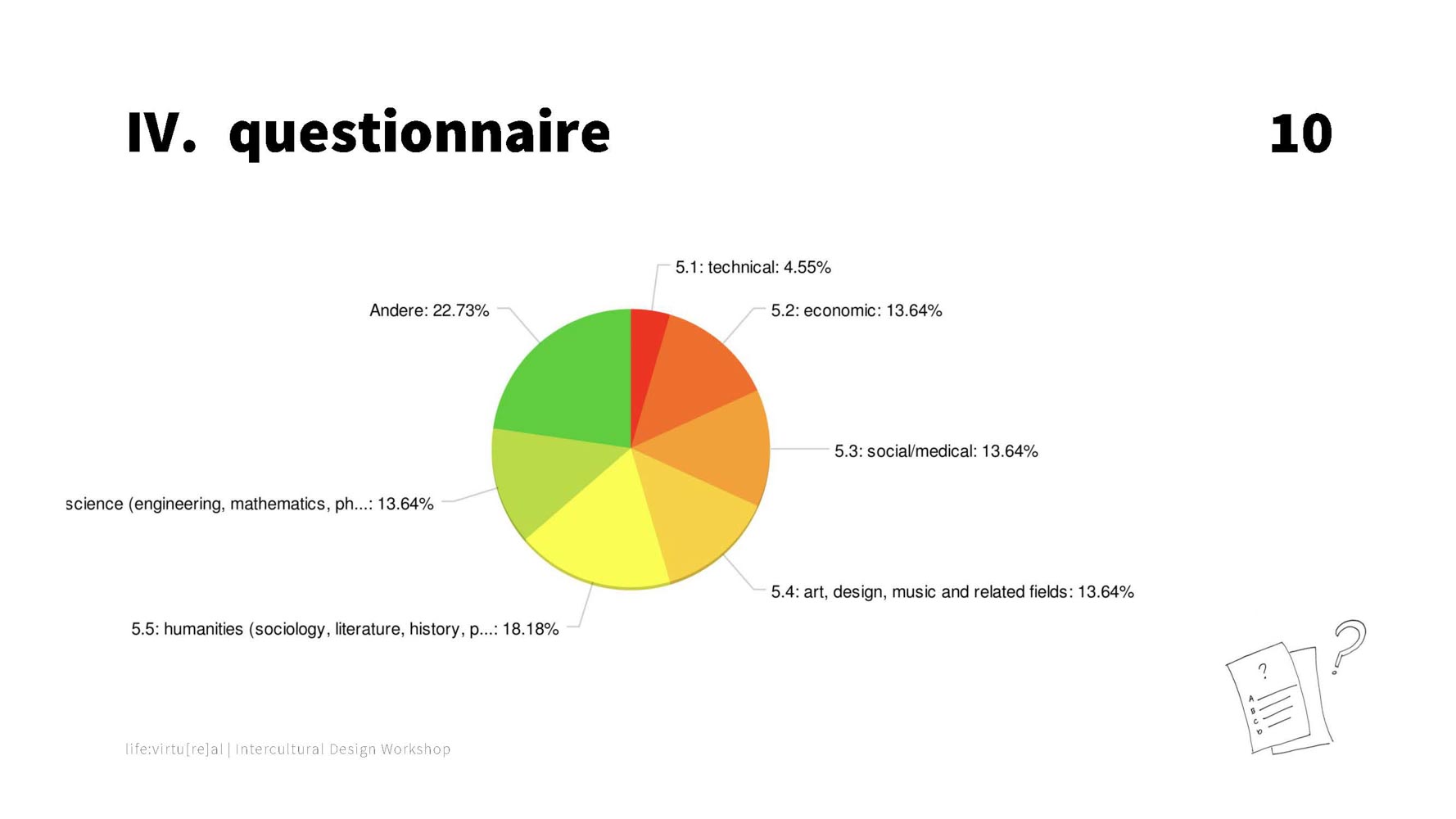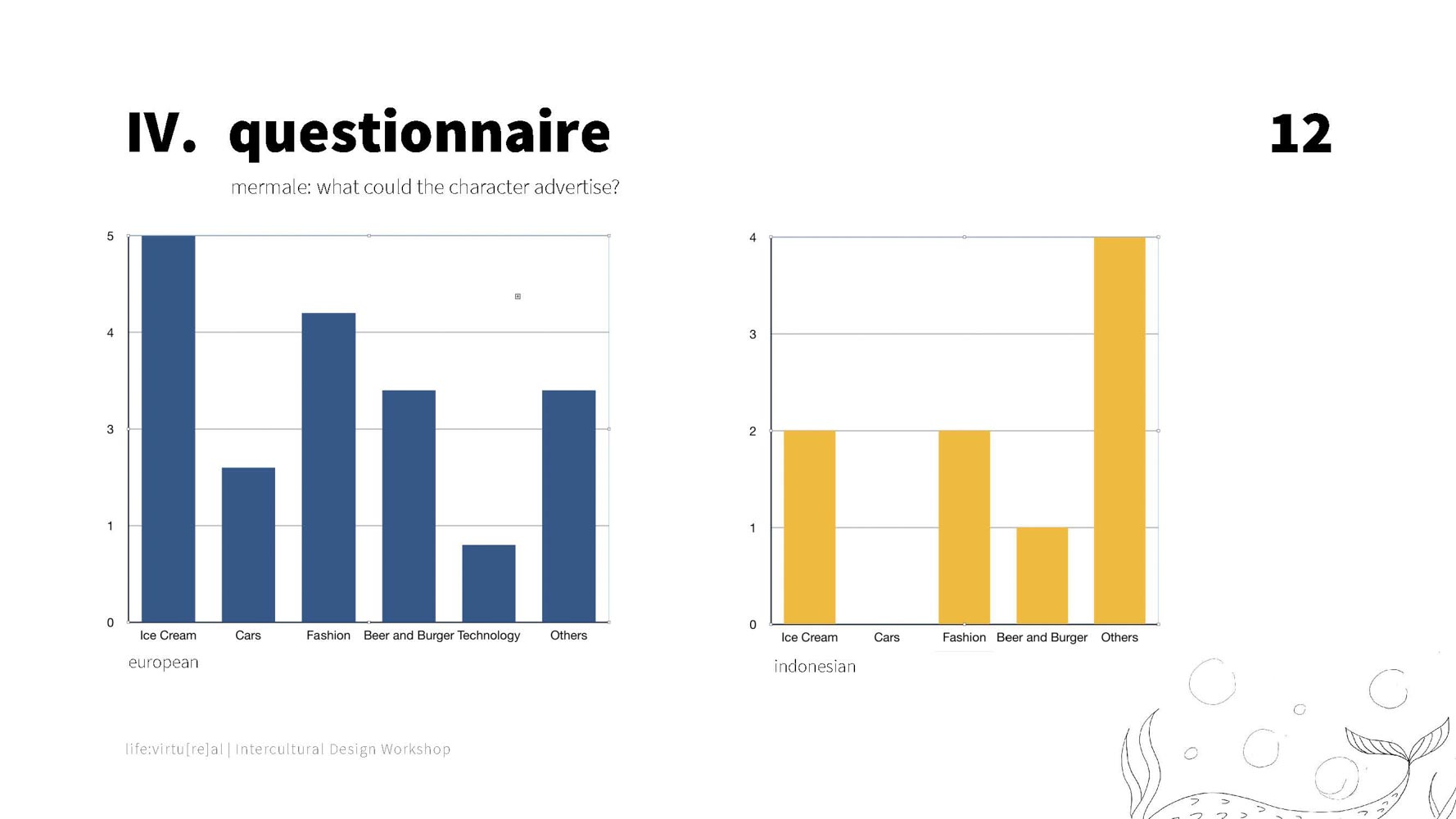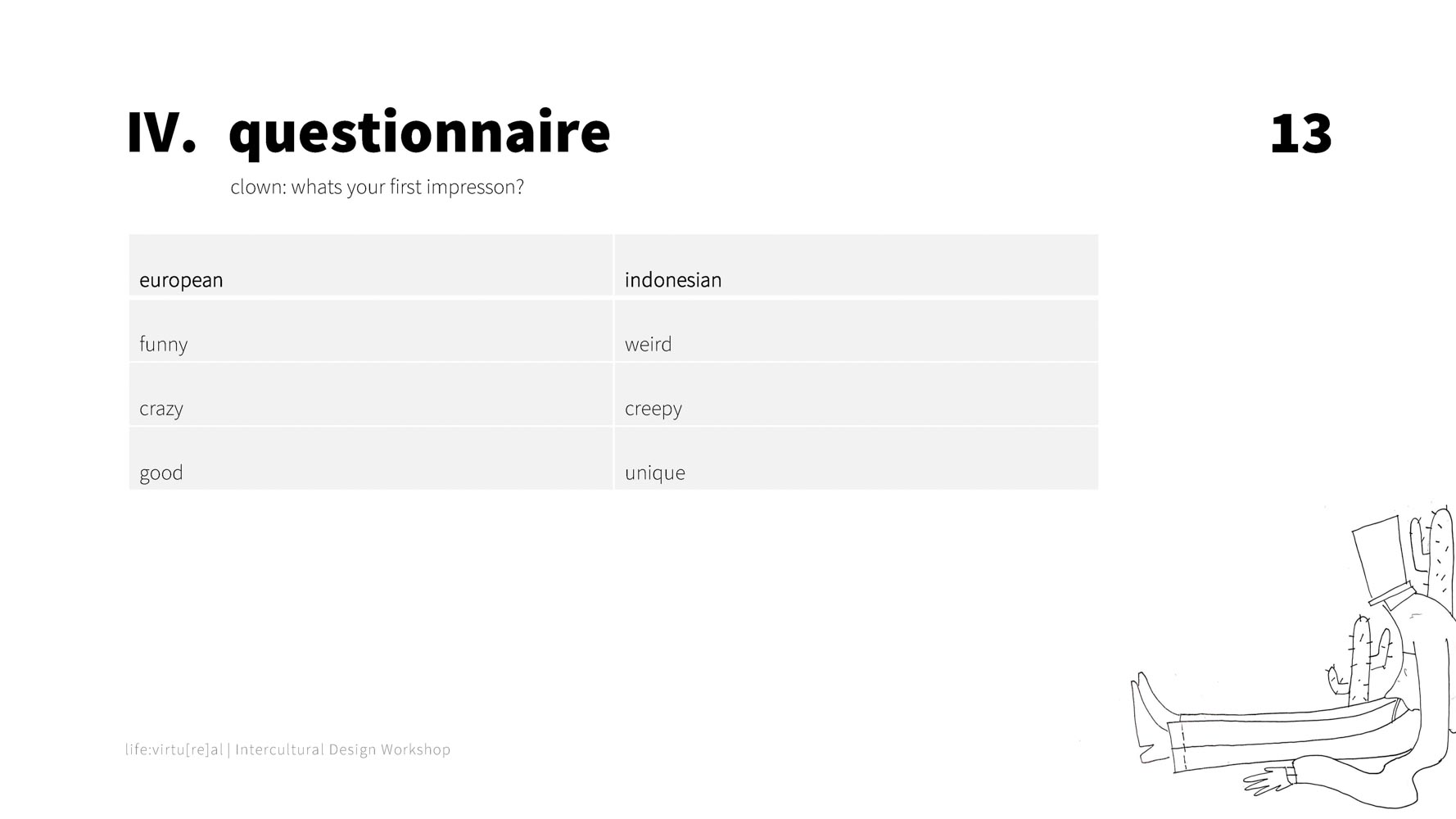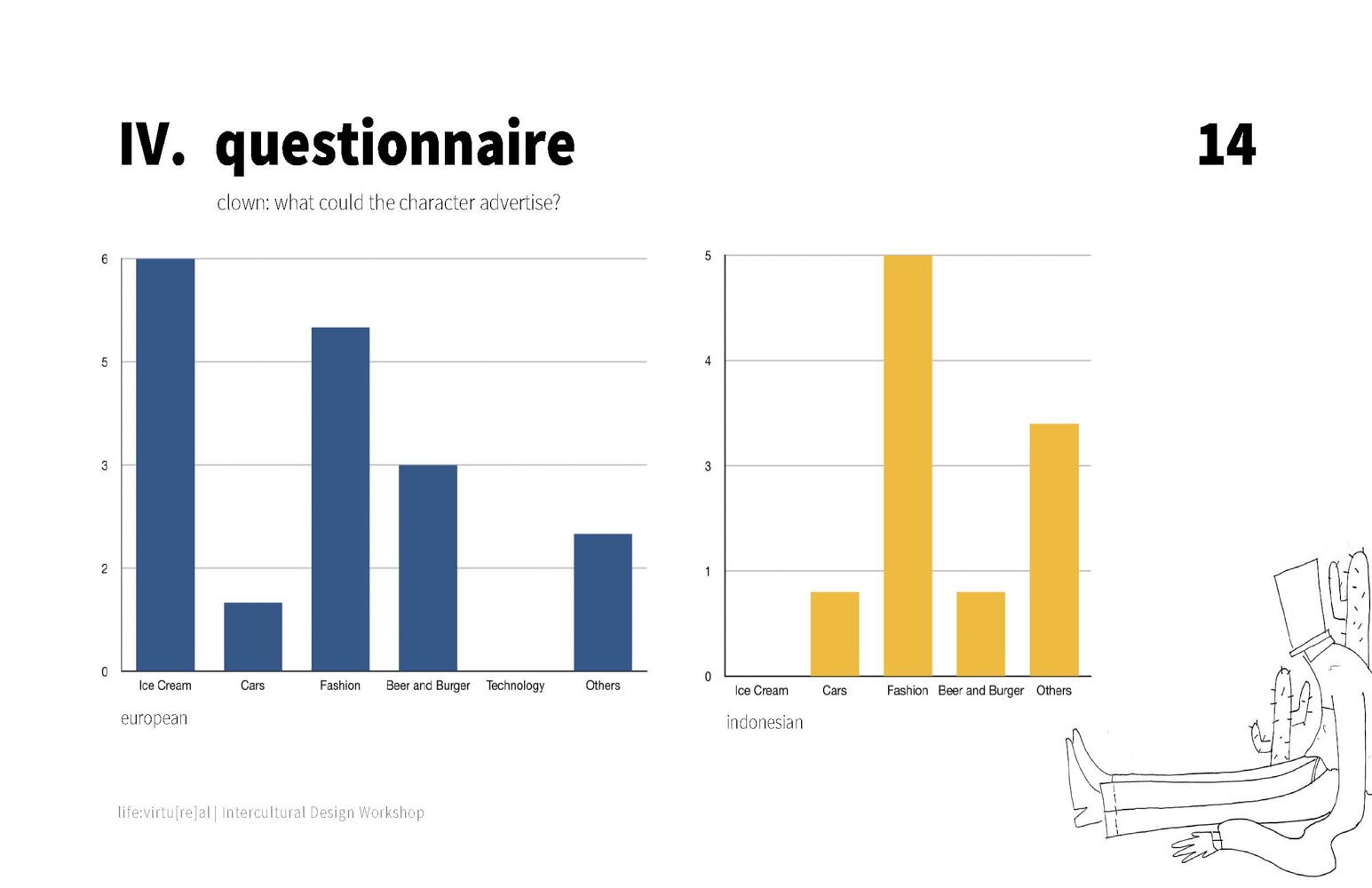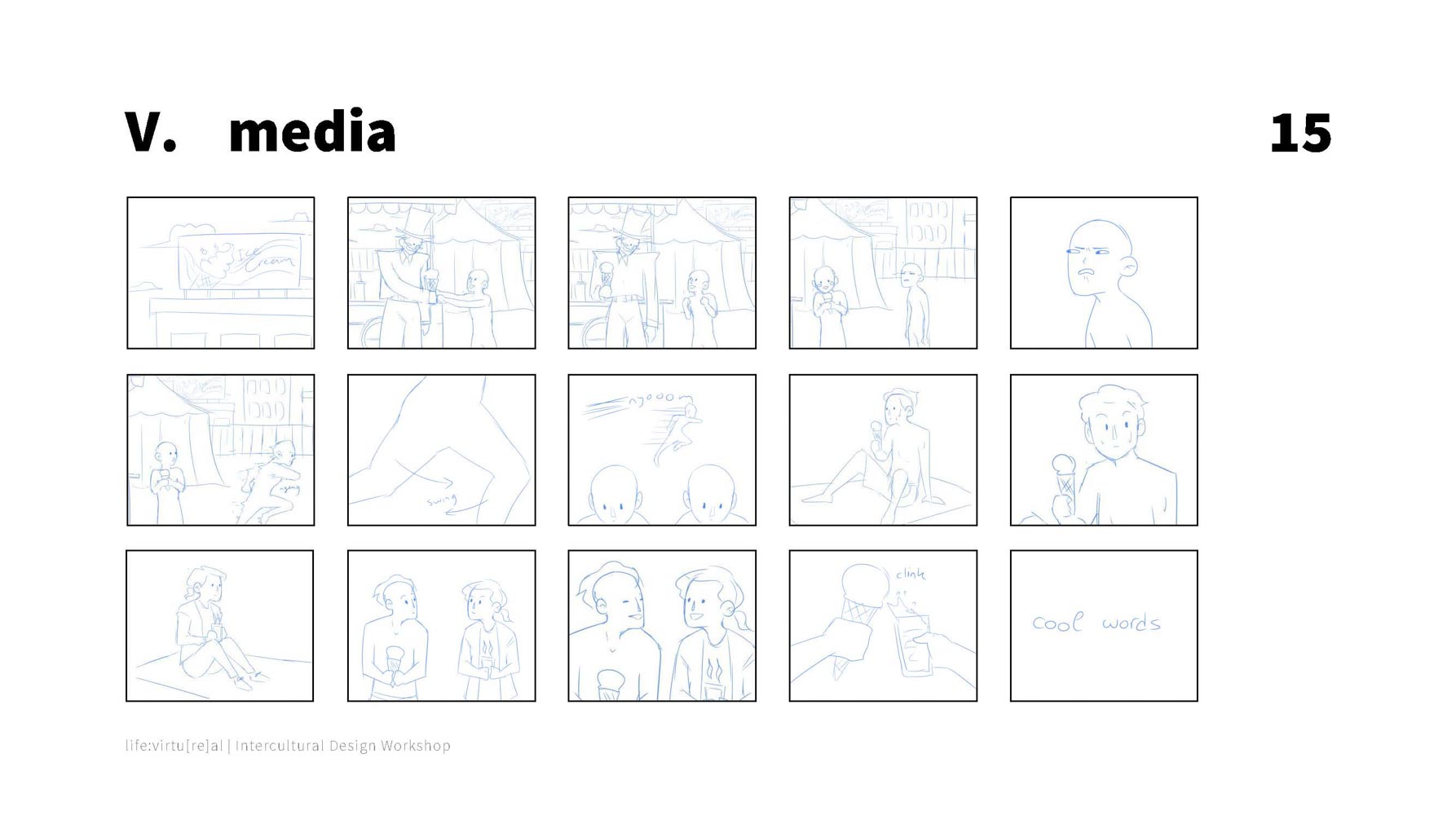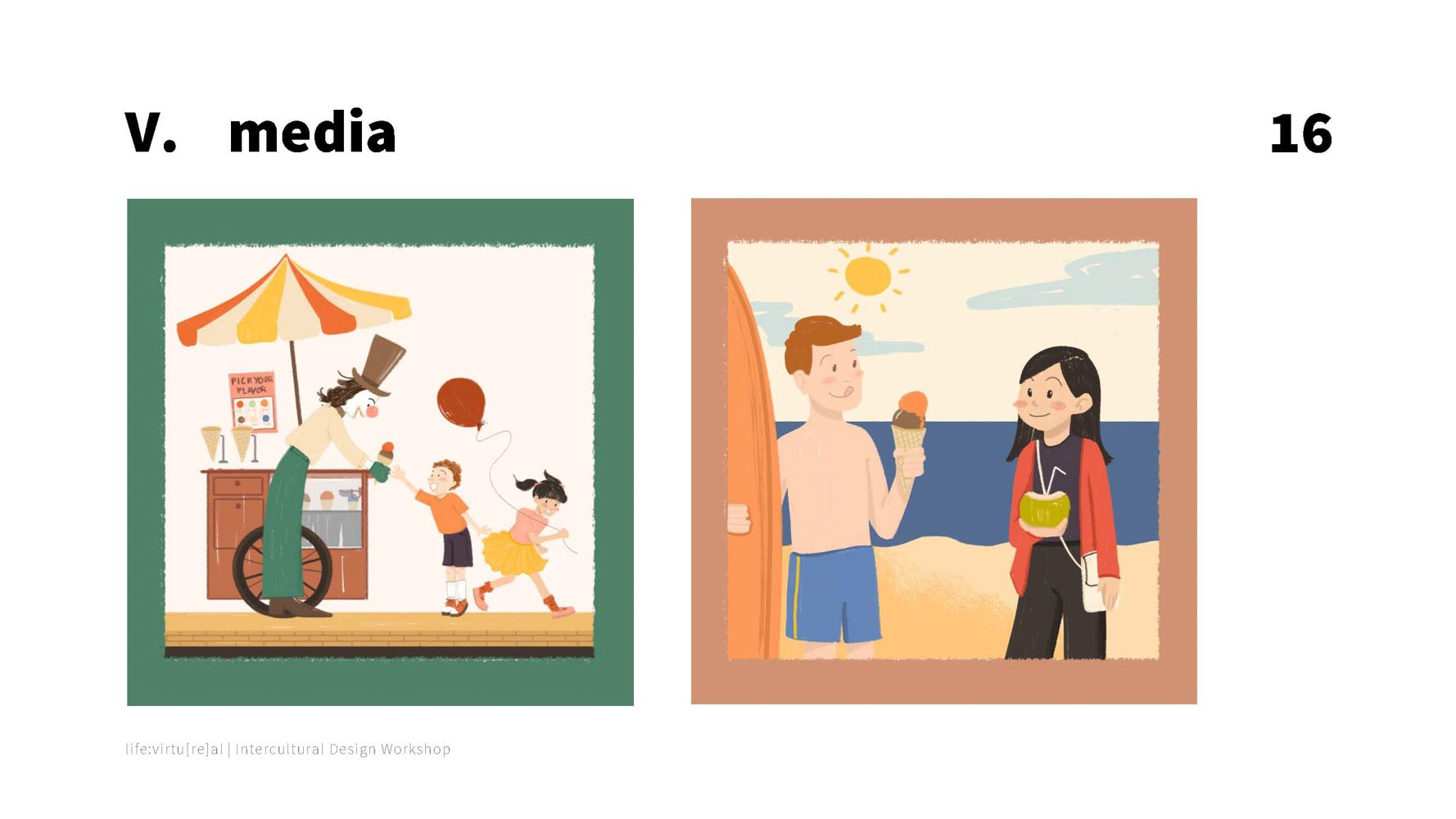1. Concept
Our topic for the workshop is advertising in Germany and Indonesia. We focused on the cultural differences between Indonesia and the western world. Therefore, we watched and analysed several advertisements from which we created keywords and developed key visuals based on our perceptions. The Indonesian advertisements were rather joyful with a surprising and emotional plot, while combining real-world elements and scenes with fictional (computer generated) elements. Through composing all these keywords we created the key visual.
To ensure it fits all the words we came up with, we chose to use a merman as the first keyvisual. On the other side, the German advertisements appear comparatively creepy, abnormal, absurd and silly. In contrast to that, they also seem very quirky and cute to us. Again, we paid a lot of attention so the keyvisual fits our thought process and came up with the idea of visualizing it with a clown who supports all the named adjectives.
